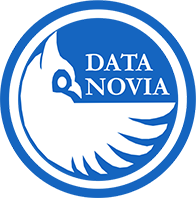Introduction
A well-configured development environment is the first step toward becoming an efficient programmer. This guide provides detailed, step-by-step instructions for setting up the tools you need for both Python and R. Whether you’re building applications, analyzing data, or developing machine learning models, having the right environment in place can greatly enhance your productivity.
In this guide, you will learn how to:
- Install Python using Anaconda.
- Configure popular Python IDEs such as VS Code and PyCharm.
- Set up R and RStudio.
- Install and configure Quarto for reproducible research and documentation.
Setting Up Python
Installing Python with Anaconda
Anaconda is a popular distribution that simplifies package management and deployment for Python. It includes many useful libraries for data science and machine learning.
Download Anaconda:
Visit the Anaconda Distribution page and download the installer for your operating system.Install Anaconda:
Run the installer and follow the on-screen instructions. Make sure to add Anaconda to your PATH if prompted.Verify Installation:
Open a terminal or command prompt and type:conda --versionThis should display the installed version of Conda.
Configuring Python IDEs
VS Code
Visual Studio Code (VS Code) is a lightweight yet powerful code editor with extensive support for Python.
Download and Install VS Code:
Go to the VS Code website and download the installer for your OS.Install Python Extension:
Open VS Code, navigate to the Extensions view (Ctrl+Shift+XorCmd+Shift+Xon macOS), and search for ‘Python’. Install the extension provided by Microsoft.Configure the Python Interpreter:
PressCtrl+Shift+P(orCmd+Shift+Pon macOS) to open the Command Palette, then selectPython: Select Interpreterand choose the Anaconda interpreter.
PyCharm
PyCharm is a dedicated Python IDE that provides robust support for development, debugging, and testing.
Download and Install PyCharm:
Visit the PyCharm website and download the Community or Professional edition.Configure a New Project:
Open PyCharm and create a new project. Select the Anaconda interpreter during project setup for a seamless experience.
Setting Up R
Installing R and RStudio
R is a language built for statistical computing and graphics, and RStudio is a popular integrated development environment (IDE) for R.
Install R:
Download R from the Comprehensive R Archive Network (CRAN) and follow the installation instructions for your operating system.Download and Install RStudio:
Visit the RStudio website and download the free RStudio Desktop version. Install it following the provided instructions.Verify RStudio Setup:
Open RStudio and run a simple command:print("Hello, R!")This confirms that RStudio is properly configured with R.
Installing Quarto
Quarto is a powerful tool for creating dynamic documents and reproducible research reports using R, Python, or both.
Download and Install Quarto:
Visit the Quarto website and download the installer for your operating system. Follow the installation instructions.Verify Quarto Installation:
Open a terminal or command prompt and type:quarto --versionThis should display the installed version of Quarto.
Conclusion
With your development environment set up for both Python and R, you’re now ready to dive into the world of programming. This setup provides a robust foundation for learning, developing, and deploying your projects efficiently.
Further Reading
- Python for Beginners: Your First Script
- Syntax and Variables in Python
- Getting Started with R for Data Science
Happy coding, and enjoy building your projects!
Explore More Articles
Here are more articles from the same category to help you dive deeper into the topic.
Reuse
Citation
@online{kassambara2024,
author = {Kassambara, Alboukadel},
title = {Setting {Up} {Your} {Development} {Environment}},
date = {2024-02-01},
url = {https://www.datanovia.com/learn/programming/getting-started/setting-up-your-development-environment.html},
langid = {en}
}
